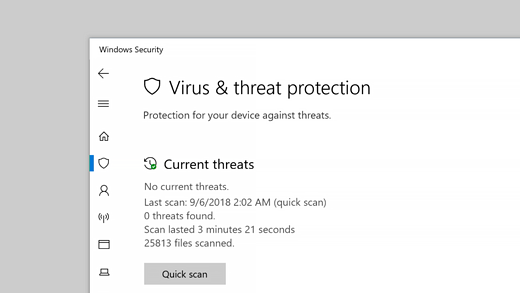

For example, you may have downloaded or installed monitoring tools, password recovery utilities, and so forth that could be a potential threat if the wrong person installed and used them. You might need to set particular locations so that Windows Defender doesn’t quarantine any programs or files that may be seen as a threat, but you want to keep.


You’re given the options on this tab of deleting them, or restoring the ones you feel were quarantined by mistake to their original locations. Once quarantined, the files can’t run on your computer, but they haven’t been removed. Quarantined items are infected files, malware, and potentially dangerous items found on your machine, which have been removed so they can’t cause additional damage. The History tab is used to view a list of items you’ve allowed to run on your computer, quarantined items, and all items that were detected on the machine. Once started, a quick scan will only take a few minutes, but a full scan may take hours to complete. If you selected a Custom scan, you’ll be prompted to select the drives and folders to be scanned first.

In looking at its interface, you’ll see that there are a number of settings and features that are common to any program that protects against malware. When a file is downloaded with one of these browsers, Windows Defender will scan it to block any malicious software or virus-infected files from being installed on your system. The current version of the product was upgraded to protect your computer against viruses, providing real-time protection, and protects your system from files downloaded with Internet Explorer or Edge. When it was first released, it was antispyware software, but evolved into protecting against a wider range of threats. Windows Defender is probably the first tool you’ll use to protect yourself from malware, because it comes installed with Windows 8 x and 10. John Sammons, Michael Cross, in The Basics of Cyber Safety, 2017 Windows Defender


 0 kommentar(er)
0 kommentar(er)
